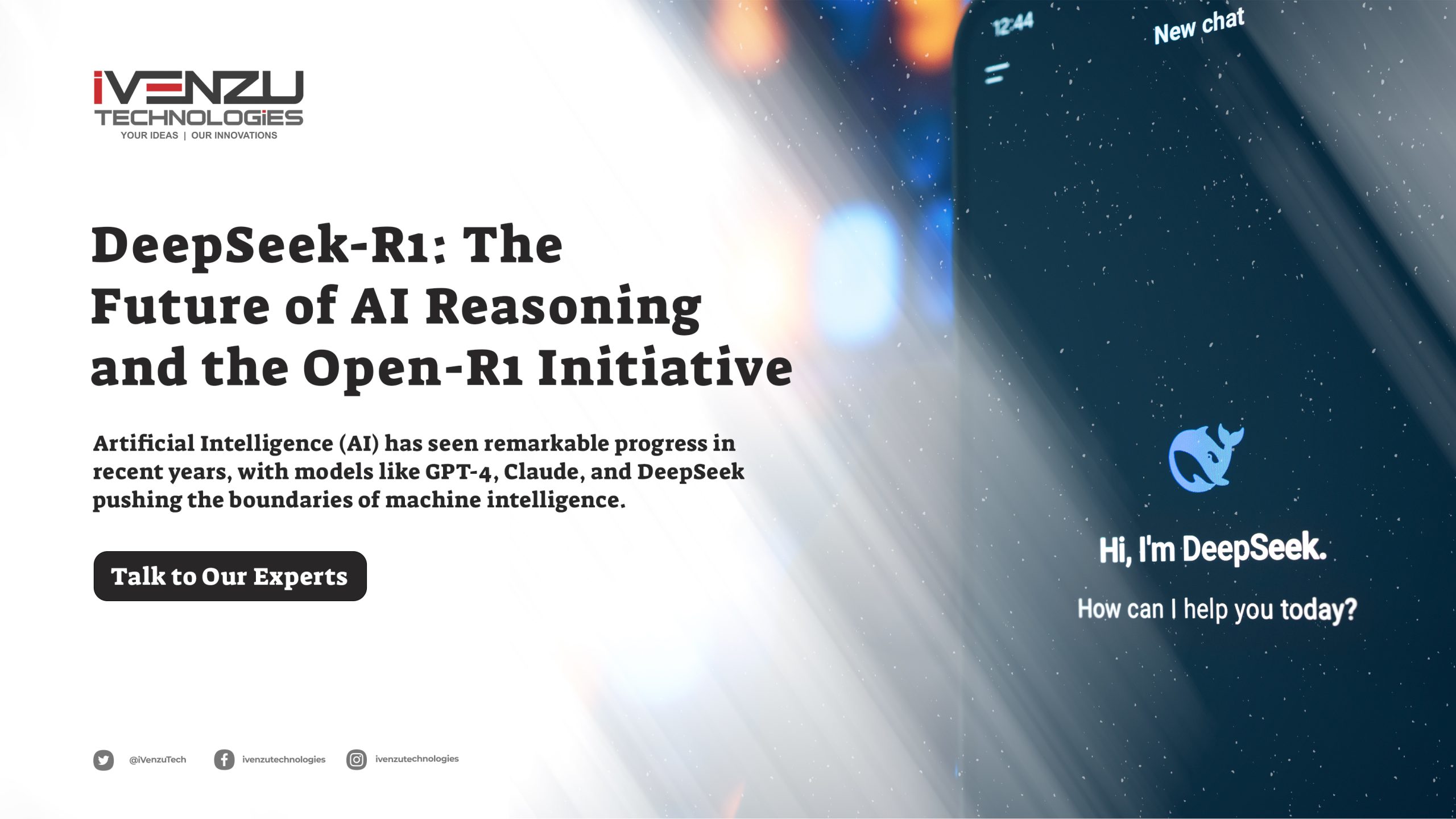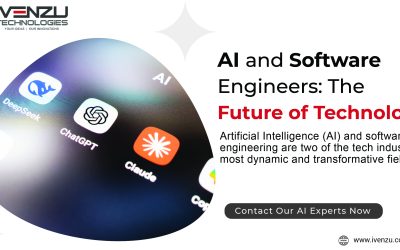DeepSeek-R1: The Future of AI Reasoning and the Open-R1 Initiative
Artificial Intelligence (AI) has seen remarkable progress in recent years, with models like GPT-4, Claude, and DeepSeek pushing the boundaries of machine intelligence. Among the latest breakthroughs is DeepSeek-R1, an advanced reasoning model that rivals OpenAI’s o1 model in its ability to solve complex mathematical, logical, and coding problems.

DeepSeek-R1 has drawn significant attention not only for its performance but also for its open approach to reasoning model training. Unlike previous models, which kept their methodologies private, DeepSeek has shared key insights into its training process, marking a new era in AI transparency.
However, despite this progress, several critical gaps remain—specifically in the areas of training code, dataset collection, and scaling laws. This has led to the creation of Open-R1, an initiative aimed at replicating and improving upon DeepSeek-R1 in an open-source manner.
In this article, we explore DeepSeek-R1’s capabilities, the innovations behind its training, the missing pieces, and how Open-R1 aims to bridge these gaps for the AI community.
What is DeepSeek-R1?
DeepSeek-R1 is a state-of-the-art AI reasoning model built upon the DeepSeek-V3 architecture, a 671 billion parameter Mixture of Experts (MoE) model. This MoE approach allows it to match the performance of heavyweight models like Sonnet 3.5 and GPT-4o while being remarkably cost-efficient.
What makes DeepSeek-R1 particularly revolutionary is its training methodology, which relies heavily on reinforcement learning (RL) without human supervision. This approach is a major departure from conventional training techniques, where models are typically fine-tuned using human-labeled datasets.
The key innovations behind DeepSeek-R1 include:
1. Base Model Strength
DeepSeek-R1 inherits its foundational strength from DeepSeek-V3, a powerful base model optimized for efficiency and performance. DeepSeek-V3 was trained using:
- Multi Token Prediction (MTP) – A technique that allows the model to predict multiple tokens simultaneously, improving efficiency.
- Multi-Head Latent Attention (MLA) – Enhancing the model’s ability to process complex information across multiple contexts.
- Hardware Optimizations – DeepSeek’s engineers optimized hardware usage, reducing training costs to just $5.5 million, making it one of the most cost-effective large-scale models to date.
2. Reinforcement Learning (RL) for Pure Reasoning
Unlike traditional AI models, which rely heavily on Supervised Fine-Tuning (SFT) with human-annotated data, DeepSeek-R1 adopts an RL-only training approach. This means the model learns reasoning skills through trial and error, receiving rewards based on the quality and accuracy of its outputs.
- DeepSeek-R1-Zero: The first phase of training, where the model completely skips supervised fine-tuning and is trained purely via RL.
- Group Relative Policy Optimization (GRPO): A novel reinforcement learning technique that makes training more efficient and stable.
- Self-Verification Mechanism: The model breaks problems into steps and checks its own answers for correctness, leading to better reasoning.
3. Refinement through Human and Verifiable Rewards
To enhance clarity and consistency, DeepSeek-R1 undergoes additional fine-tuning after the RL phase:
- Cold Start Phase: The model is fine-tuned on a small, high-quality dataset to improve readability.
- Human Preference-Based Filtering: Human evaluators help eliminate low-quality outputs.
- Verifiable Reward Mechanisms: Automated metrics ensure that the model consistently produces high-quality reasoning steps.
These steps result in a model that is not only strong in reasoning but also clear, structured, and reliable in its responses.
Difference Between DeepSeek-R1 and Other AI Models
DeepSeek-R1 distinguishes itself from models like ChatGPT (GPT-4), Claude, and Gemini in several ways:
| Features | DeepSeek-R1 | ChatGPT (GPT-4) | Claude (Anthropic) | Gemini (Google) |
|---|---|---|---|---|
| Training Approach | RL-Only with Self-Verification | Supervised + RLHF | Supervised + Constitutional AI | Supervised + RLHF |
| Reasoning Ability | Advanced (Pure RL optimization) | Strong but dependent on human fine-tuning | Ethical AI focused, good reasoning | Good at diverse tasks, strong reasoning |
| Dataset Transparency | Partially Open | Closed | Closed | Closed |
| Mathematical Capabilities | High | High | Moderate | High |
| Efficiency | Cost-effective training ($5.5M) | Expensive training | Expensive training | Expensive training |
| Specialization | Logic, Mathematics, Code | Conversational AI, Creative Writing | Ethical AI, Fact-checking | Generalist AI |
| Code Availability | Partial | Closed | Closed | Closed |
DeepSeek-R1’s reliance on pure RL makes it unique, allowing for a more autonomous problem-solving approach compared to ChatGPT’s human-annotated fine-tuning. Its cost-effectiveness also makes it a strong alternative for AI researchers looking for open and efficient models.
The Missing Pieces: What DeepSeek-R1 Did NOT Release
While DeepSeek-R1’s release is a major step forward for open AI research, several critical aspects of its development remain undisclosed:
1. Lack of Public Training Code
DeepSeek has not released the exact training scripts and hyperparameters used to build DeepSeek-R1. This means that:
- The optimal reinforcement learning settings are unknown.
- The exact architectures and tweaks that contributed to the model’s success remain unclear.
- The community cannot fully replicate the results without reverse-engineering the training process.
2. Dataset Collection Mystery
A major question surrounding DeepSeek-R1 is: How were its reasoning-specific datasets created?
- The model clearly requires high-quality mathematical, logical, and coding datasets.
- DeepSeek has not revealed the sources or curation methods for these datasets.
- Without access to similar datasets, training open-source models at this level becomes challenging.
3. Unclear Scaling Laws & Compute Trade-Offs
DeepSeek-R1’s efficiency is remarkable, but:
- How does performance scale with more compute or data?
- What are the trade-offs between RL-only training vs. RL + SFT?
- Can smaller models achieve similar reasoning abilities without extreme compute costs?
These questions are critical for the future of AI reasoning models, yet remain unanswered by DeepSeek’s release.
Conclusion: The Future of Open AI Reasoning
DeepSeek-R1 has set a new benchmark for AI reasoning, proving that reinforcement learning can significantly enhance problem-solving abilities. However, its release still leaves key questions unanswered.
With Open-R1, we aim to fill these gaps by creating a fully transparent, open-source alternative. By working together as a community, we can build the next generation of AI reasoning models, expanding their impact across math, science, and beyond.
Your questions and answered
What is DeepSeek-R1?
DeepSeek-R1 is an advanced AI reasoning model developed using a reinforcement learning-only (RL) approach. Built on the DeepSeek-V3 architecture with 671 billion parameters, it excels in solving mathematical, logical, and coding problems—rivaling top models like GPT-4 and Claude.
How is DeepSeek-R1 different from GPT-4 and Claude?
Unlike GPT-4 and Claude, which rely on supervised fine-tuning and human feedback, DeepSeek-R1 uses a pure reinforcement learning method. This allows it to learn through self-verification and reward-based optimization, leading to more autonomous reasoning capabilities and cost-effective training.
What makes DeepSeek-R1 unique in AI model training?
DeepSeek-R1’s uniqueness lies in its RL-only training, use of Group Relative Policy Optimization (GRPO), and a self-verification mechanism. These innovations enable the model to learn logic and reasoning without relying on human-annotated datasets.
Is DeepSeek-R1 open-source?
DeepSeek-R1 is partially open-source. While some insights into its training process are shared, key elements like the training code, dataset sources, and scaling laws have not been publicly released.
More Latest Blog
Complete Project Management Guide: Best Practices, Tools, and Methodologies Project management is the process of planning, organising, and...
Are Ads Free on LinkedIn? Complete 2025 Guide to LinkedIn Advertising Costs & Options LinkedIn is the go-to platform for professionals...
A Comprehensive Guide to Magento Web Development: Mastering E-Commerce Success In today’s fast-paced digital economy, having a robust e-commerce...
AI and Software Engineers: The Future of Technology In this article, we will explore the relationship between AI and software engineers, the role of...





